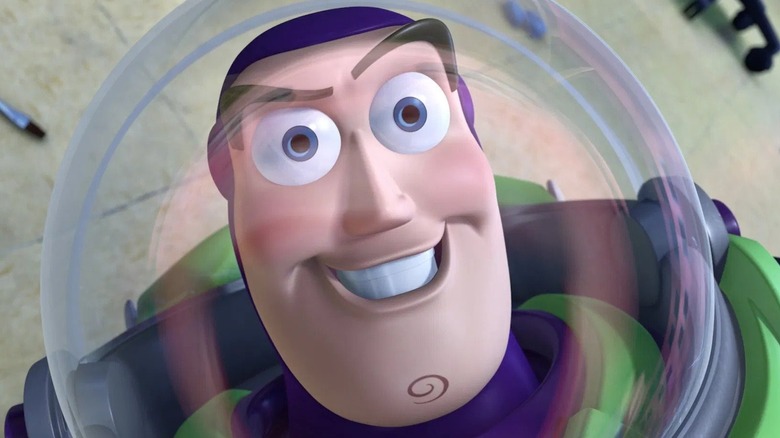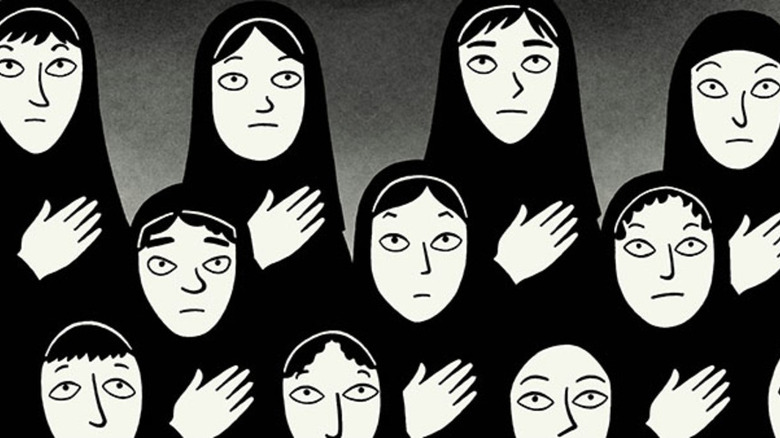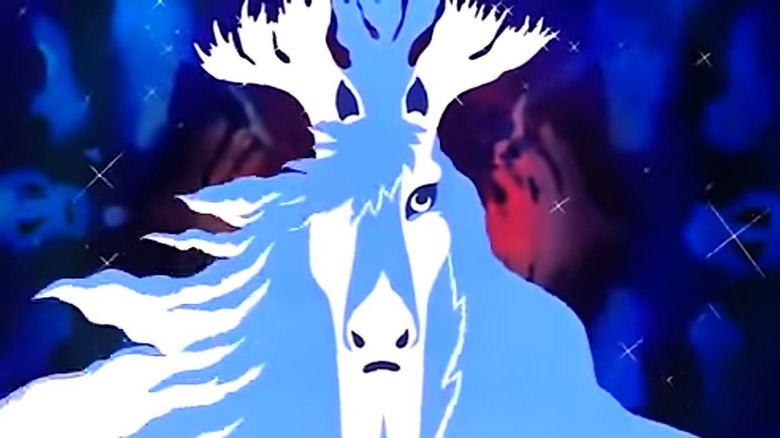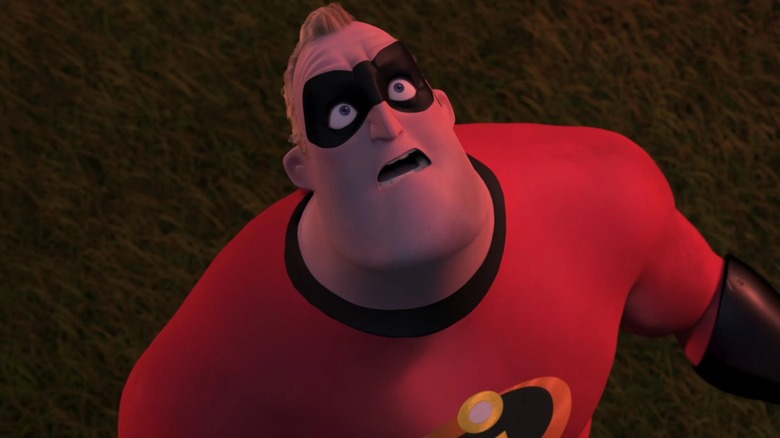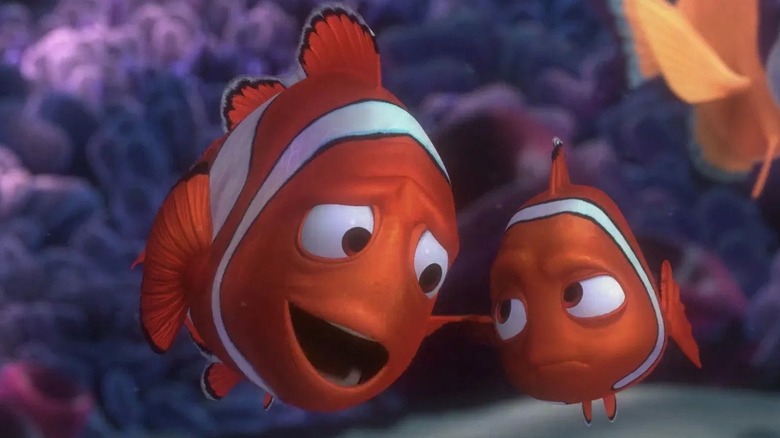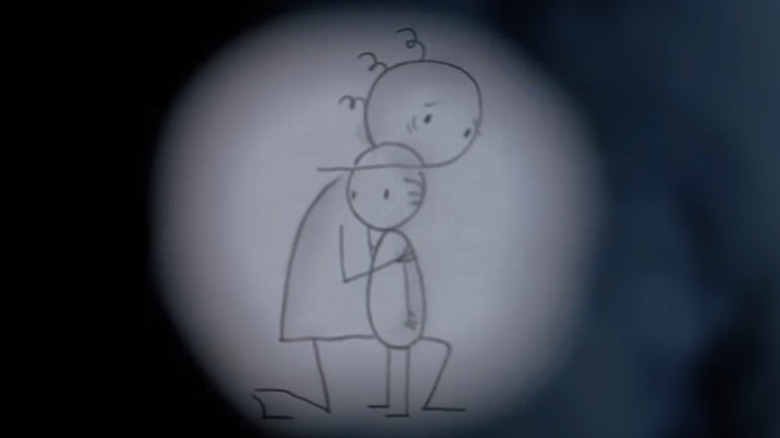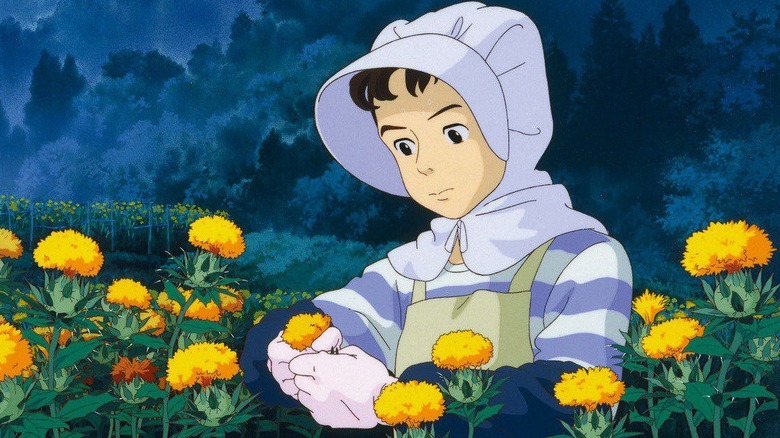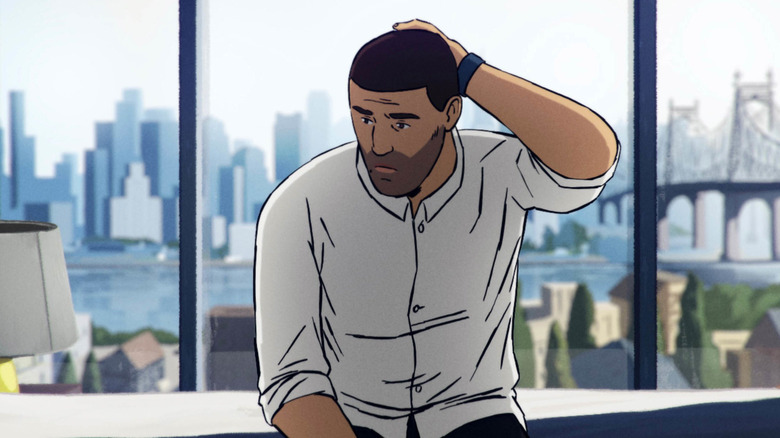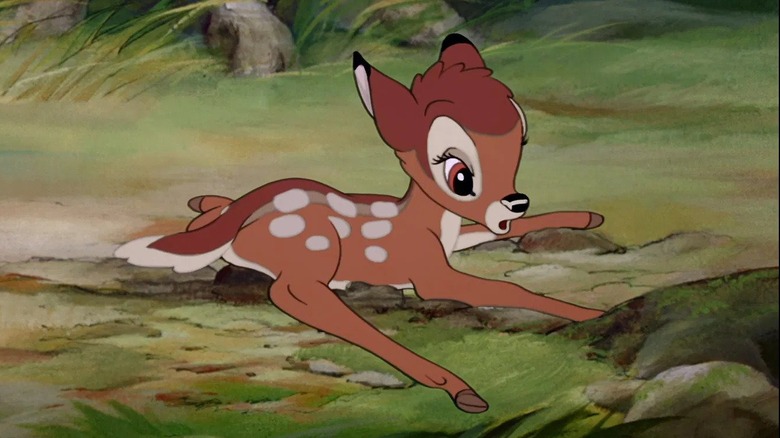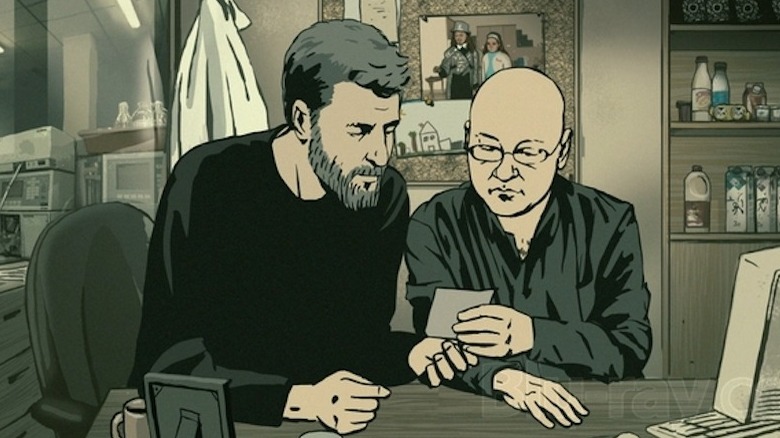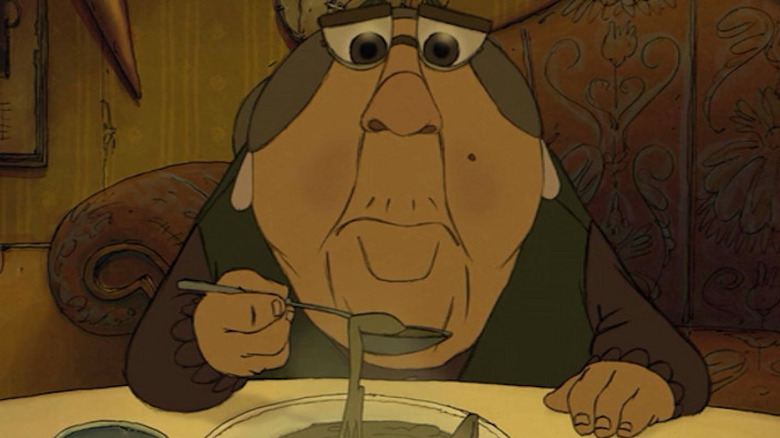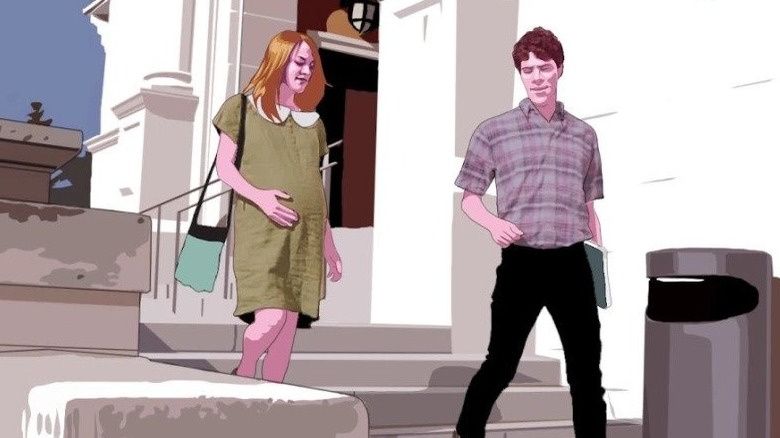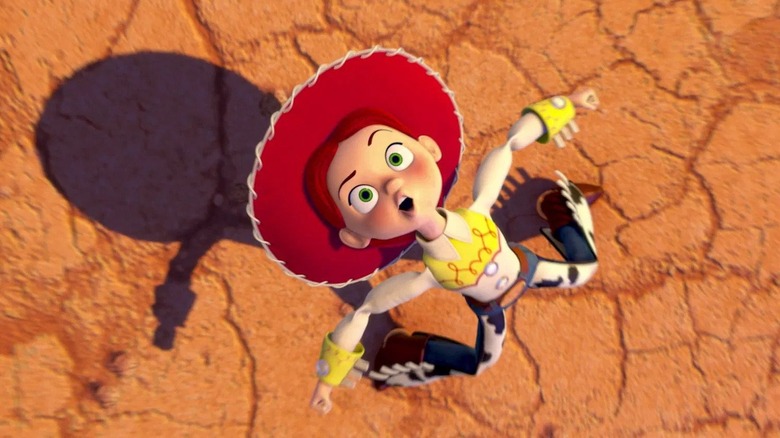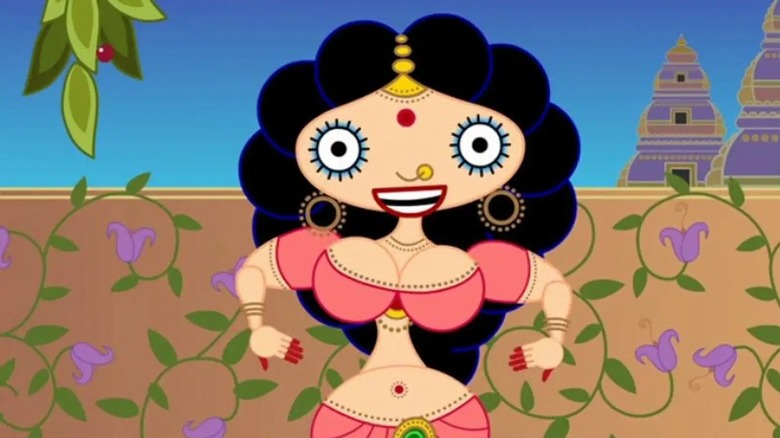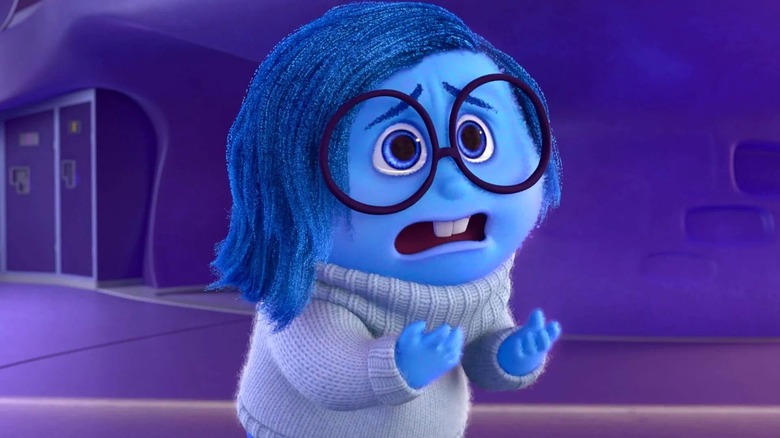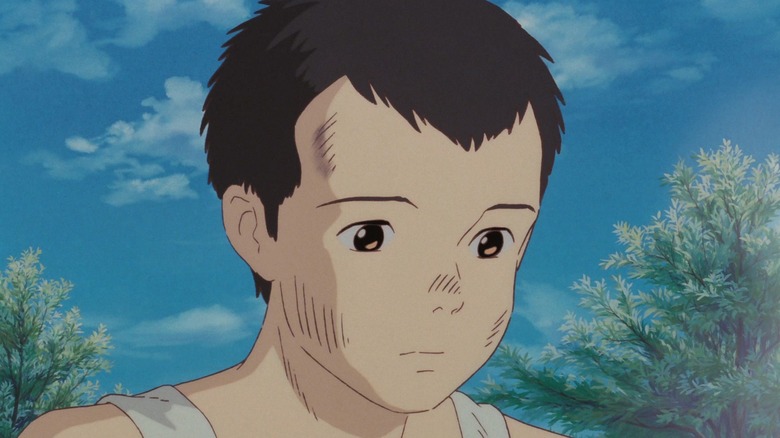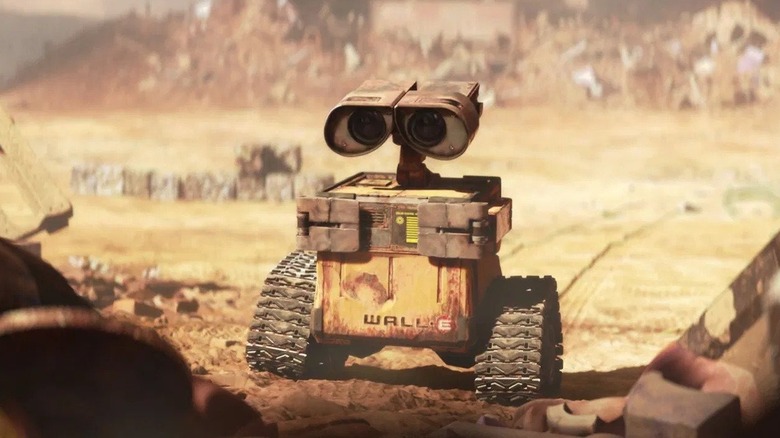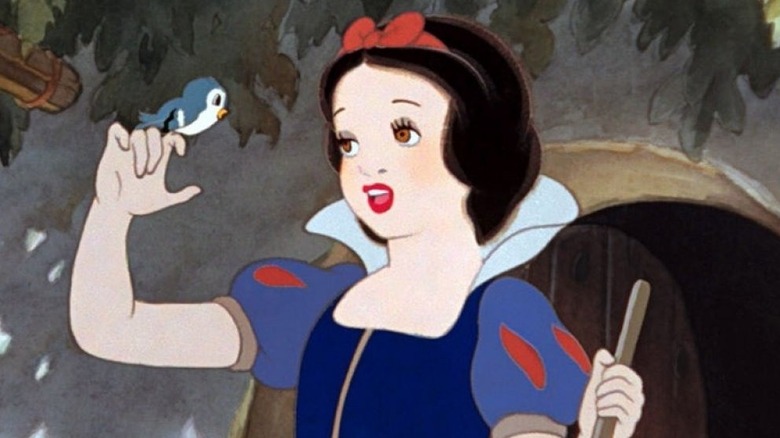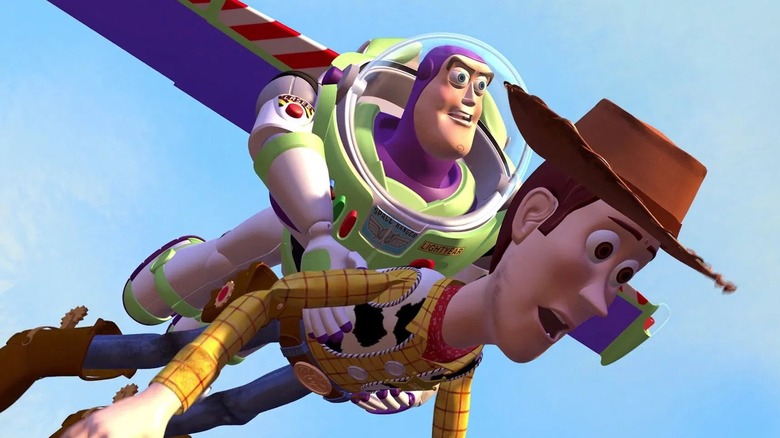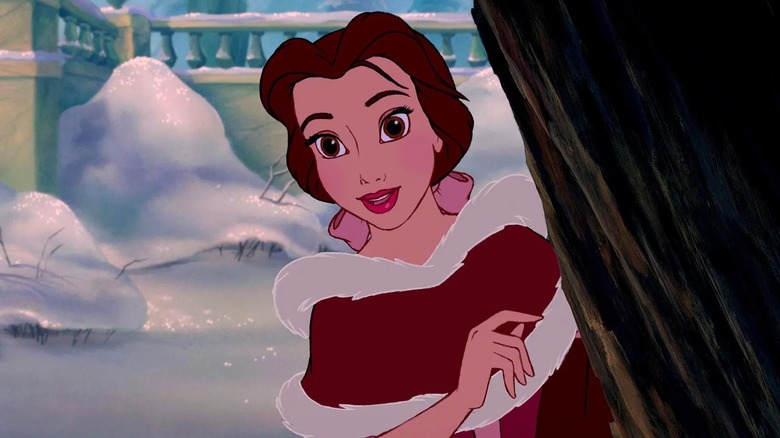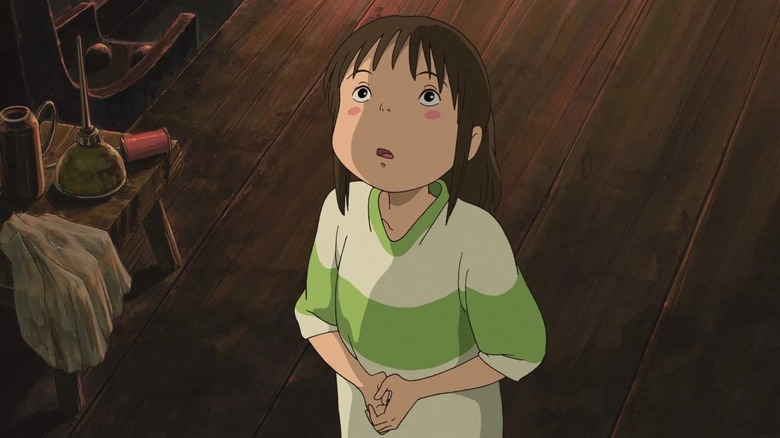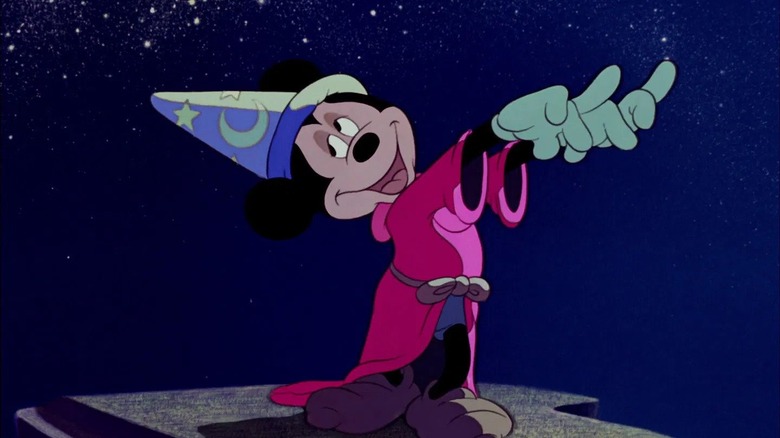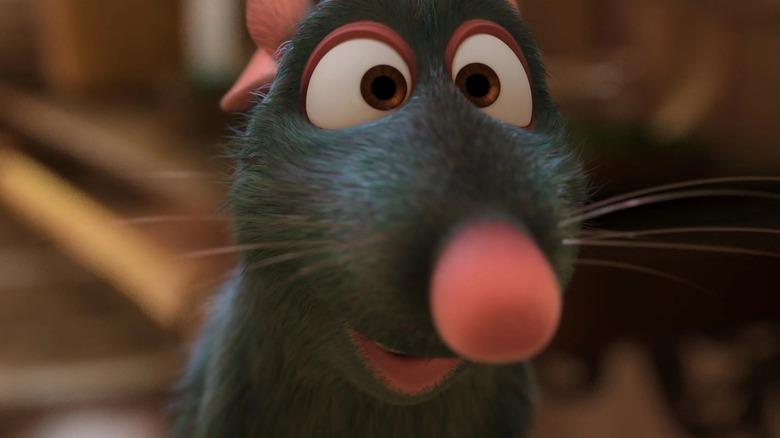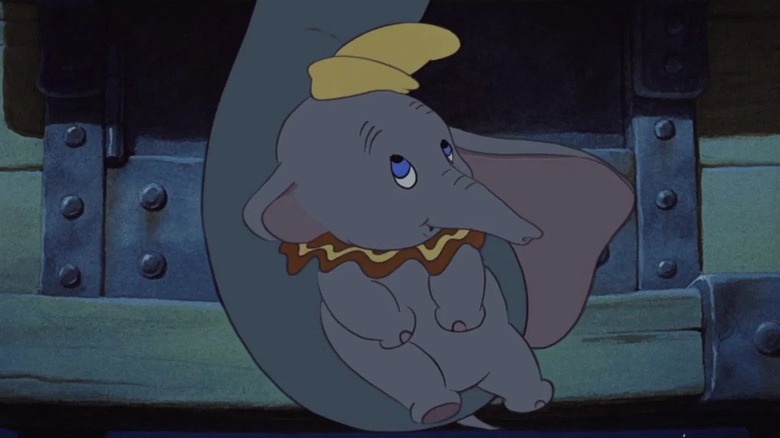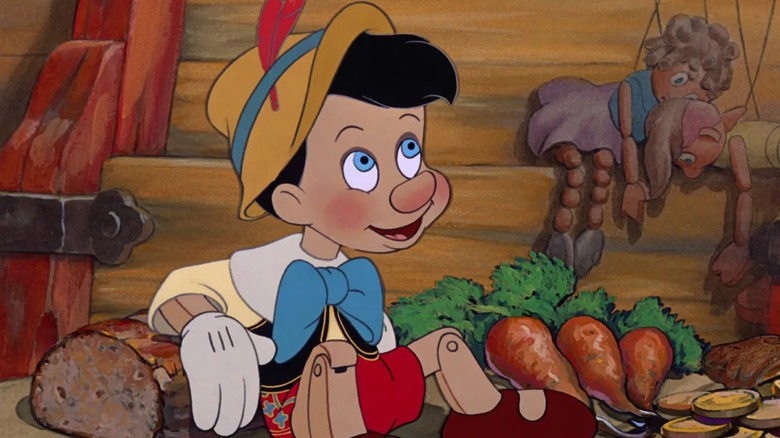Metacritic Says There Are Only 24 Near-Perfect Animated Movies
Animation has such an incredibly wide range of possibilities. Over the decades, it has taken some time for folks to appreciate that it isn't just childish drawings. Once, graphic novels had the same problem, but eventually got the wider culture to take them seriously. But that doesn't help the fact that no animated film has ever won a Best Picture Oscar — which is amazing when you think of all the classics that have come and gone.
Of course, animated movies can be for adults, and many others could be considered children's or family films. There is a lot of crossover, and some films have the sort of incredible depth and art that can blow multiple generations away. Animation is a big tent, often driven by ambition, risk-taking, and amazing skill. Nothing proves that more than the list of animated films with a near-perfect score on Metacritic. We've compiled everything with a 90 or better, and there's a stunning range here in terms of style, content, and vision. Get ready to see the best the medium has to offer.
"Persepolis" (2007)
Complex and visually distinctive, 2007's "Persepolis" is one of those movies that highlights how necessary animation can be.
Could there be a live-action "Persepolis"? Maybe, but it wouldn't have the same powerful, stark black-and-white images that look like both relatable cartoons and profound woodcuts. It might not have a 90 on Metacritic, either.
At least, Marjane Satrapi — co-director of the film and author of the original graphic novel memoir — doesn't think so. She told Animation World Network in 2007, "With live-action, it would have turned into a story of people living in a distant land who don't look like us. At best, it would have been an exotic story, and at worst, a 'third-world' story." Those simple drawings have a deep resonance with audiences.
"Persepolis" is Satrapi's own story, telling how she came of age during the birth of a new fundamentalist regime that stripped her and her family of their rights and security. Thankfully, she returned to co-direct the film alongside Vincent Paronnaud, because her perspective — straightforward, no-holds-barred, honest — is as invaluable as her art. The result is a deeply personal film where style and substance cast a symmetrical spell.
"Son of the White Mare" (1981)
An evocative plunge into Hungarian folklore, you might not have heard of "Son of the White Mare," but its 90 on Metacritic speaks for itself: This is something you want to seek out.
Dense and dreamy, "White Mare" is an unforgettable experience. How unforgettable? As IndieWire's Eric Kohn put it in a 2020 article: "Jankovics' masterpiece is a kind of drug trip in movie form. It's also much more than that: Comprised of shimmering bright colors, it's a Hungarian folk tale that bends, twirls, and morphs, with an all-consuming energy that never lets up. 'Son of the White Mare' may be the greatest psychedelic animated movie ever made."
Originally titles "Fehérlófia," the flick offers viewers a kind of transcendence. It doesn't just show you a myth; it shows you what it would feel like to be part of one, with all its giddy highs and rambling mysteries. Part artsy exploration of Hungarian culture and part colorful comic book of a powerful demigod-like figure's adventures in righting wrongs, "White Mare" is an immersive, weird, and excellent ride.
"The Incredibles" (2004)
"The Incredibles" — Pixar's tongue-in-cheek, action-filled movie about a family of superheroes — has a 90 on Metacritic, putting it among the best of the best.
That's partly because despite their powers, the Parr family is still realistic and grounded in concerns — and neuroses — even adult audiences can empathize with. When a crisis suddenly demands that the family suit up and fight once more, it turns out to be just the bonding activity they all needed.
The movie is also notable for spawning an unusual amount of debate about its themes and perceived politics, which director Brad Bird told IGN in 2005 that he takes as a compliment: "The fact that it was written about in the op/ed section of The New York Times several times was really gratifying to me. Look, it's a mainstream animated movie, and how often are those considered thought provoking?"
There is plenty to chew on here, and it's all delivered with exuberance and fun, making for a winning — and acclaimed — combination.
"Finding Nemo" (2003)
The beautiful, well-structured story of a father clownfish diligently (and neurotically) searching for his missing son, "Finding Nemo" has a Metascore of 90.
Its popularity must have led to so many aquarium visits. Because in "Nemo," the underwater world is more gorgeously rendered than ever — and even though the fish can talk and the sharks vow to abstain from eating seafood, it feels realistic.
But the ocean view in "Nemo" is only part of the experience. It's also a surprisingly tense, nervy comedy about Marlin's (Albert Brooks) fear of losing his son.
Most children's movies couldn't get away with making that kind of adult fear so central — but Pixar has always had a deft touch when introducing young viewers to more grown-up perspectives. It helps, of course, that the movie hinges on the slightly fraught oddball friendship between Marlin and the goofy, memory-impaired Dory (Ellen DeGeneres); friendship is relatable across all ages. Indeed, Dory proved so popular that she got her own sequel: 2016's "Finding Dory." It feels like this aquatic cinematic universe could handle quite a few movies without upsetting its ecosystem.
"It's Such a Beautiful Day" (2012)
"It's Such a Beautiful Day," with a Metascore of 90, will make you cry over stick figures. Unconventional and brilliant, Don Hertzfeldt's hour-long film brings viewers into the life of Bill, who — we gradually learn — has a brain tumor that's distorting his memories and perceptions. As his memory worsens — at one point he goes for the same walk multiple times without realizing it, each time observing to himself, "It's kind of a really nice day" — the film's narrator starts to push against the story. If you were telling it, and you could stop it from ending tragically, wouldn't you?
Sure, "Beautiful Day" could be too high-concept for its own good. Stick figure art — sometimes blended with photography — and a fourth-wall-breaking narrator could lead to a film that's too precious to be emotionally involving. But here, that couldn't be further from the truth. "Beautiful Day" is a perfect compressed tragicomedy, as deeply felt as it is inventive and as funny as it is heartbreaking. It's a terrific film that not only breaks the mold, but feels like this particular mold could never be used so effectively again.
"Only Yesterday" (1991)
"Only Yesterday" is a quiet and emotionally complex drama. Animated films are often full of fantasy and adventure, so it can be easy to overlook subtle, realistic works like this one, but once you've seen "Only Yesterday," you'll remember it. And given its Metascore of 90, you'll remember it fondly.
The movie follows Taeko Okajima (Miki Imai), a shy and kind young woman who ventures out of her settled — but lonely — life in Tokyo and into the countryside. She's only going to lend her family a hand with the safflower harvest, but the trip leads her to reminisce about her past ... and those memories may lead her to rethink her future. With a sweet, low-key romance and a touching exploration of the bittersweetness of growing up, "Only Yesterday" is a lovely little movie.
While subtitle translations are often preferable, given that they preserve the original voice performances, we should mention that the English dub of "Only Yesterday" also features a great cast: Daisy Ridley as Taeko and Dev Patel as her love interest Toshio.
"Flee" (2021)
"Flee" is a documentary that's animated for an unusual reason: The subject of the film can't risk revealing his identity.
The movie tells the story of an Afghan refugee living in Denmark, given the name "Amin Nawabi" to conceal his true identity. The real-life Amin recounted all the remarkable — and devastating — upheaval of his life for filmmaker Jonas Poher Rasmussen, who then put together this stunning visualization that has earned a 91 on Metacritic.
With a childhood spent in a repressive, dangerous Afghanistan and an almost equally grim "refuge" in Moscow, Amin's life has been largely defined by trauma. But as we watch "Flee," we see how he eventually found more happiness and stability — and even a boyfriend — in Denmark.
What could have been a straightforward story of moving towards peace and fulfillment becomes more tangled, however, as Amin's escape into Denmark necessitates lies that have haunted his life ever since. In exploring the complexities of his self-reinvention, "Flee" really shines. The film's protagonist is working through his own history, even as we're experiencing it with him, and that makes for an unusually powerful experience.
"Bambi" (1942)
In modern times, "Bambi" is highly regarded with a Metascore of 91 — but when it first came out, its small scale and relatively minimal fantasy elements earned critical contempt. The New Republic's review at the time of its 1942 release said: "In an attempt to ape the trumped-up realism of flesh and blood movies, [Disney] has given up fantasy, which was pretty much the magic element." But that was nothing compared to the uproar generated by the movie's most famous (and most frightening) incident: a hunter killing Bambi's mother. The magazine Outdoor Life (qtd. in "Walt Disney, From Reader to Storyteller") called the movie "the worst insult ever offered in any form to American sportsmen."
Subsequent reappraisals have been far kinder, and "Bambi" now gets plenty of appreciation as an affectionate nature portrayal and a masterpiece of animation. According to the American Film Institute, it's the third-best American animated film ever made. It was one of Walt Disney's own favorites, as well; The Walt Disney Family Museum, which describes Disney as "notoriously stingy with praise," points out that the in-progress art for "Bambi" got a nearly unprecedented reaction from him: "Fellas, this stuff is pure gold."
"Waltz with Bashir" (2008)
A superb, wrenching war documentary both tragic and emotionally raw, animator Ari Folman's "Waltz with Bashir" is a searching memoir and exploration of wartime atrocities, powered by mesmerizing reconstructions that harness raw emotion in a way live-action representations simply could not. Its Metascore of 91 speaks to that considerable power.
The film examines the massacre of Palestinian refugees during the 1982 Lebanon War, and it's a headlong plunge into chaos and horror. Folman wants to find answers about who was responsible — and that includes exploring the guilt of bystanders like Folman himself, who must decipher his role in the slaughter.
Dark, thoughtful, and unrelenting, "Bashir" asks the same questions about as its audience. Of course, answers can be hard to come by, but what the film gets — and expresses very well — is that no matter how many questions we ask, it feels like they're always coming too late.
"The Triplets of Belleville" (2003)
With a Metascore of 91, "The Triplets of Belleville" stands out as one of the most unique animated films ever made. Director Sylvain Chomet plunges viewers into a world of lovingly misshapen characters, with physical characteristics — like a cyclist's bulging calves and thighs, the blockish shoulders of a Mafia goon, or a suck-up maître d' with (literally) no backbone — exaggerated beyond all reason. These caricatures may look silly (or even grotesque), but Chomet imbues them with great fondness.
The centerpiece of the film is Madame Souza, the devoted grandmother of professional cyclist Champion. When he's abducted as part of an elaborate gambling scheme, Madame Souza and her chubby, train-hating dog Bruno have to track him down and rescue him. They get crucial help from some surprising allies — former vaudeville singers the Triplets of Belleville, who are now elderly and impoverished.
The movie is splendidly surreal, but it's also full of ordinary human kindness. When Madame Souza lovingly massages her grandson's sore calves or the Triplets offer a stranger a bed for the night, you can feel Chomet's tenderness. Combined with the animation, that makes "The Triplets of Belleville" a winner.
"Tower" (2016)
"Tower" is hard to watch. It should be: It's an animated documentary about the University of Texas mass shooting in 1966, when Charles Whitman shot up to 46 people from a campus clock tower, killing 14. It was a horrendous, shocking crime.
The initial horror of it is well-preserved and brought to vivid life in "Tower," as director Keith Maitland puts audiences in the shoes of the day's victims and bystanders. Using archival footage, radio dispatches and new interviews, the film is entirely based on first person testimonies from those who were there that day. The film's Rotoscoping technique (with animators drawing over live-action footage of actors re-enacting the day's events) puts it somewhere above animation on the realism scale, and close enough to live action footage that it has the power to feel like it was actually shot that day.
As Manohla Dargis points out in The New York Times, by focusing so closely on the victims, this flips the traditional script we have for talking about these kinds of crimes: "[Whitman] is a question mark, a lethal void whose immateriality makes an agonizing contrast to the men and women he shot, those who died as well as those who suffered and survived." That makes the film agonizing — but it also makes it deserving of that 92 Metascore.
"Toy Story 3" (2010)
A belated sequel is rarely good news. That alone should have spelled doom for "Toy Story 3," which came out 11 years after "Toy Story 2."
But as soon as "Toy Story 3" hit theaters, it became clear that it was anything but a lazy retread or a chance to cash in on the series' early success. Pixar wasn't out of ideas — it had wisely taken its time with this one.
"Toy Story 3" is full of color, humor, and emotion, and the number of years between it and its predecessor ultimately work in its favor. Now, the series is about how time has irreversibly passed. Andy, the boy whose love gave the toys' lives meaning, has grown up. So what happens to the characters we're so invested in? The movie addresses that question — one that's as philosophical as it is practical — cleverly and gracefully, spinning a tale of the toys' mishap-filled search for a new home. In the end, it balances some of Pixar's most heartbreaking moments with some of its most hopeful and bittersweet. It finished off with audience applause and a 92 on Metacritic.
"Sita Sings the Blues" (2008)
Ambitious and cheekily meta, "Sita Sings the Blues" has a Metascore of 93. The film is a mash-up of two stories, one traditional and one personal — but, of course, the point of "Sita" is that the two are intertwined. Personal experiences give new insight into cultural stories and traditions, and such stories can be a roadmap for life when they are most needed.
Here, director Nina Paley braids the story of her failing marriage with the story of the Hindu goddess Sita. Illustrating Sita's story as told in the "Ramayana" and adding in plenty of commentary, she finds parallels that help her heal.
"Sita Sings the Blues" drew controversy in India due to its offhanded and sometimes irreverent handling of Hinduism, especially its portrayal of Lord Ram. The Times of India recaps the protests against the film and the defenses of its artistic license. It shouldn't be taken as a straightforward portrayal of Hinduism, but as a chronicle of Paley's life and ideas, it's very strong.
"Inside Out" (2015)
Pixar is known for its innovative, high-concept stories, but "Inside Out" takes that to a whole new level. It doesn't go outside the box; it takes the box apart.
The movie is set inside the world of one little girl's mind, where anthropomorphic emotions control her reactions to life. Their cozy status quo gets shaken up when Riley moves to a new city, and her usually joyful life has to change. So does the life of her literal Joy, voiced by Amy Poehler. The film is ultimately a touching, sophisticated look at why we need even our unpleasant emotions.
Admittedly, you may not want to think too long about the idea of all your strings being tugged by little people with agendas of their own. But it's hard to nitpick while you're actually in the middle of "Inside Out," which offers an irresistible flood of creative, colorful, and clever ideas. Riley's beautifully depicted inner landscape comes with explanations for everything from your core personality to that irritating commercial jingle that keeps popping into your head. Its ambition and inventiveness earn it a Metascore of 94.
"Grave of the Fireflies" (1988)
This list has several hard-hitting, emotionally powerful movies on it, but "Grave of the Fireflies" is arguably the toughest watch here. With its score of 94, it's also the highest-ranked serious drama among Metacritic's top animated films.
Set during World War II, "Fireflies" is a devastating story told with luminous simplicity. It follows brother and sister Seita and Setsuko, whose mother dies in a firebombing. Right from the start, we know what becomes of them: These children will die. First young Setsuko, whose ashes her brother will carry with him in a candy tin, and then Seita himself. They love each other, but that won't be enough to protect them from the malnutrition and starvation the war has brought to their doorsteps. "Grave of the Fireflies" feels like it could stand as a monument to all innocent casualties, and it's as beautifully crafted as it is heart-wrenching.
"WALL-E" (2008)
With a stunning, nearly wordless first act and one of the cutest robots of all time, it's easy to see why "WALL-E," with a score of 95, is one of Metacritic's near-perfect animated movies.
The Pixar classic starts off on a sun-baked, environmentally devastated Earth where WALL-E himself, a scrappy little garbage-cleaning robot, dutifully squishes mountains of trash into cubes and preserves relics of a lost culture — like his treasured VHS tape of "Hello, Dolly!" His life is interrupted when another robot, the sleek and higher-tech EVE, arrives. Unbeknownst to WALL-E, EVE is on a mission to find out whether or not the Earth can once again sustain life — and when she gets the answer to that question, she jets off into space. The lovestruck WALL-E follows, leading the film into a new story of a sedentary, out-of-touch humanity rediscovering its roots and capabilities.
With its low-key humor and ample heart, "WALL-E" is a definite charmer.
"Snow White and the Seven Dwarfs" (1937)
When it comes to achieving success right out of the gate, you can't beat "Snow White and the Seven Dwarfs." It was Disney's first feature-length picture, and it was done in Technicolor, a rarity at the time for animation. As the History Channel explains, this was quite the gamble: Disney had to borrow nearly $1.5 million to get the film made (and remember, this was 1937 — the equivalent now would be roughly $27.8 million). People all around the visionary (including his wife) were telling him the film would flop, and that adult audiences in particular would not pay to see a feature-length cartoon about dwarfs.
These days, the film's 95 on Metacritic is almost the least of its successes. The film broke box office records, giving Depression-era audiences exactly the kind of escape they needed. It also inspired generations of Disney princesses, minting the studio's brand of animated, revamped fairy tale musicals. Quite frankly, it's impossible to imagine an animated cinematic landscape — or even one not focused on animation — without "Snow White."
"Toy Story" (1995)
"Toy Story" was Pixar's first feature film, and it made its company famous overnight. Computer animation had never looked so good, but the film's technical innovations weren't the only reason for its acclaim. With a warm, witty script (It was the first animated film to garner a Best Screenplay nomination) and phenomenal voice acting from Tom Hanks and Tim Allen, it's truly a film that has stood the test of time.
Every kid has wondered if their toys move when they're not looking. "Toy Story" takes that premise and ran with it, delivering a movie filled with wonder and small, perfectly chosen details, from an Etch A Sketch's participation in a cowboy-style "quick draw" to a toy cult inside a claw machine. In the midst of it all was a compelling, strangely human story of two toys — one in the midst of an existential identity crisis — in a standoff over a little boy's affection.
Imaginative, heartwarming, and surprisingly deep, "Toy Story" has almost everything you could possibly want in a children's movie.
"Beauty and the Beast" (1991)
The fairy tale of "Beauty and the Beast" has received a number of excellent retellings and adaptations. But there will always be something special about the animated version Disney released in 1991, as evidenced by the film's superb 95 on Metacritic.
This is one of the consummate Disney masterpieces. The film looks utterly beautiful, using both hand-drawn animation and early computer graphics to excellent effect. The script is moving and witty, and the voice acting is top-notch. But perhaps most importantly of all, the songs — by repeat Disney collaborators Howard Ashman and Alan Mencken — are sublime. Ranging from the romantic to the comedic to the inspiring and terrifying, the music in "Beauty and the Beast" is whatever it needs to be ... and always perfect.
Quite simply, everything here works — and it all works together. Like the enchanted servants of the Beast's castle, the film invites you and lays out a magnificent spread of delights, saying, "Be our guest."
"Spirited Away" (2001)
Hayao Miyazaki's "Spirited Away" pulled off a remarkable feat: In 2003, it became the Academy Awards' first Japanese nominee for Best Animated Feature, and then, on Oscar Night, it took home the statue. It took a lot for anime to get its big break with mainstream Western audiences, but that moment couldn't have happened with a better film than "Spirited Away." The film has a Metascore of 96.
The movie is about a little girl named Chihiro who finds herself transported into the spirit world, which Miyazaki fills with strange, wondrous, and sometimes frightening figures, from the lonely people-eater No Face to the sludgy stink spirit of a polluted river (who turns out to be beautiful once he's finally clean again). The spirit world is transfixing, but it's also dangerous: If Chihiro forgets her name, she'll be trapped there forever.
Miyazaki and Studio Ghibli make Chihiro's tale enthralling. Coupled with its lovely, endlessly creative hand-drawn animation, it's simply impossible to look away from.
"Fantasia" (1940)
"Fantasia" has a Metascore of 96, and it should almost come with an asterisk noting that, most likely, no other movie has ever gotten so many kids interested in classical music.
A glorious, deeply unconventional Disney film, "Fantasia" eschews traditional narrative to instead offer an unusual kind of concert. It treats audiences to beautifully performed music — including "The Nutcracker Suite," "Night on Bald Mountain," and "Rite of Spring," among others — accompanied by gorgeous visuals. Sometimes the illustrations for the segments are abstract. Sometimes they're grandiose — "Rite of Spring" shows Earth's beginnings all the way to the fall of the dinosaurs, and "Night on Bald Mountain" gave us all nightmares by opening a peephole straight into hell. These sections are balanced out with the more story-like segments, from the playfulness of dancing hippos and even a little bit of Mickey, whose role as "The Sorcerer's Apprentice" blends humor and horror to deft, unexpected effect.
Decades later, "Fantasia" still feels as striking as ever. It remains a testament to the power of both music and animation.
"Ratatouille" (2007)
It shows how far computer animation has come that it can make food look so delicious that your mouth waters. If you want proof, just watch 2007's "Ratatouille," which features a banquet spread of impeccably-prepared French cuisine that looks so delicious, you'd never know it was prepared by a rat. Especially when the rat is Remy (Patton Oswalt), a tiny little gourmand with culinary gifts aplenty. As the movie itself says, "A great artist can come from anywhere."
Remy befriends Linguini (Lou Romano), a young garbage boy at Gusteau's, a once-great, now-fading Parisian restaurant. Linguini has no cooking skills whatsoever, but Remy has enough for both of them — and luckily, he can guide Linguini through preparing the perfect dishes that will put Gusteau's back on the map. But only if an inheritance feud, a rat family squabble, a visiting critic, and a burgeoning romance don't get in the way.
An ode to sincerity of craft, simplicity of intention and the nourishment that fuels them both, "Ratatouille" deserves its 96 score on Metacritic.
"Dumbo" (1941)
"Dumbo" earns its 96 Metascore by virtue of being tremendously endearing. Who can resist an adorable baby elephant with enormous ears that let him fly? Even if you go in wanting to be cynical, odds are you'll be won over by the sheer adorability of Dumbo — and you might even be blinking back tears when "Baby Mine" plays as the little elephant's mother reaches through her cage to hold him with her trunk.
The movie does have its faults, and like several other early Disney films, it now has a notice attached to it via a Disney+ warning giving viewers a heads-up about negative and offensive stereotypes. In this case, at least the subtextually Black crows in "Dumbo" are sympathetic — though their leader is voiced by a white actor doing a stereotypically "Black" voice, and he was originally named "Jim Crow" after the South's rigid segregation laws. But the problems in "Dumbo" don't erase the virtues that have made it a classic. In the end, it's grounded in the pathos of a tender mother-son relationship — and the powers and magic of belief.
Of course, it's also grounded in the cuteness of cartoon elephants, a cinematic virtue that can never be overstated.
"Pinocchio" (1940)
You can't get any closer to a perfect Metascore than "Pinocchio," and that can be said without any noses growing, even a little. "Pinocchio" — one of Disney's best and most glowingly animated movies — has a 99.
In case you've been living under a rock for the last 80 years, the film tells the story of a marionette who, at the wish of lonely woodworker Gepetto, comes to life. But one of the coolest things about "Pinocchio" is how much there is in addition to that basic plot. From a cricket of conscience to children being turned into donkeys and sold away into misery to Gepetto being swallowed whole by a whale, "Pinocchio" is a smorgasbord of rich, wonderfully offbeat delights. Almost more than any other Disney film, it captures the rambling strangeness of imagination. Simultaneously coherent and dreamlike, it would be a mistake to lump this in under the "Disney classics" umbrella — like the nose on his face, "Pinocchio" stands out.
As The Hollywood Reporter said when the film was first released, "'Pinocchio' is entertainment for every one of every age, so completely charming and delightful that there is profound regret when it reaches the final fade-out." Luckily, like all the high-scoring films listed above, new pleasures and welcomed whiffs of nostalgia are no further away than your nearest screen of choice.
